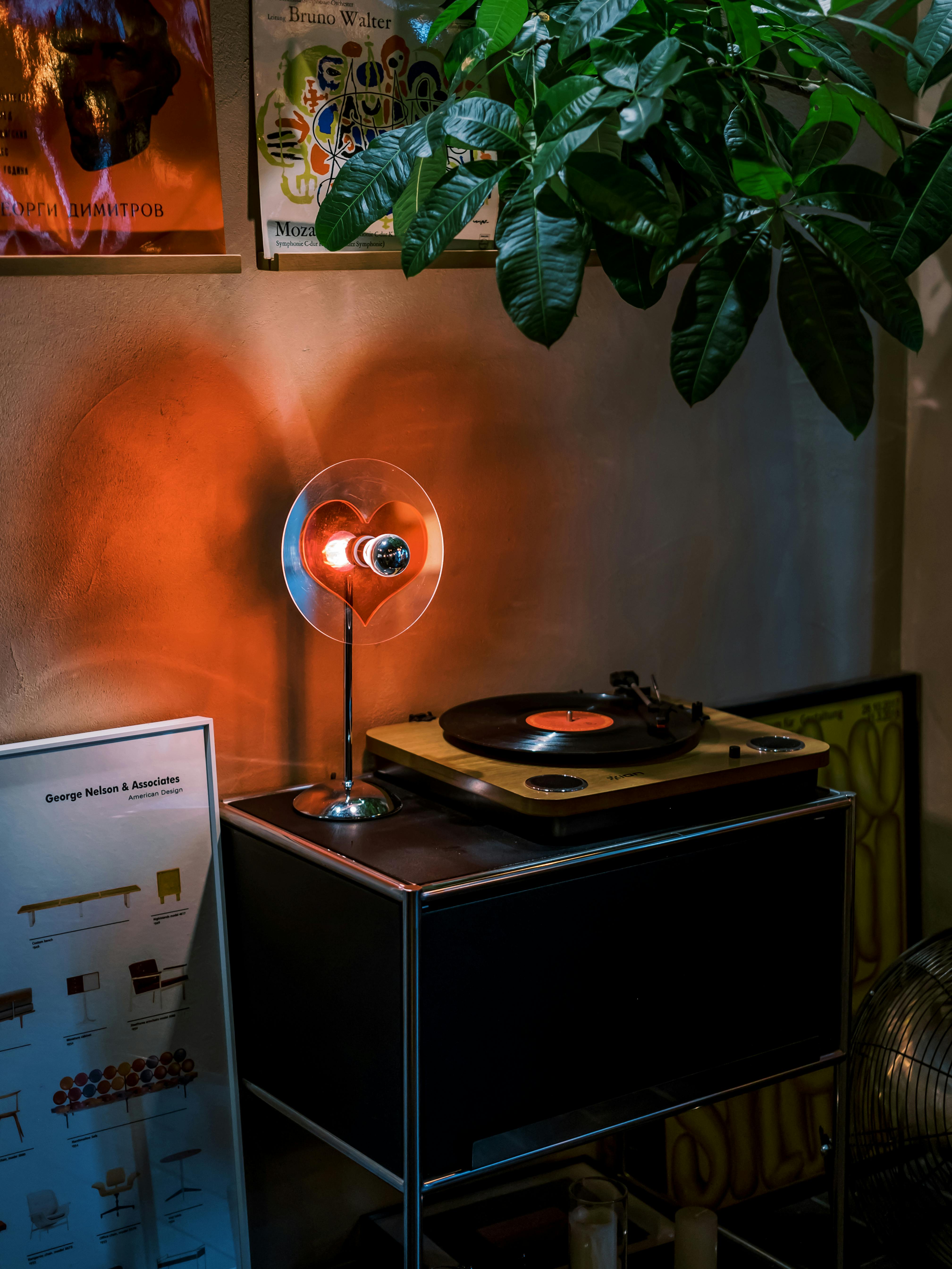The air at a modern comic convention is a sensory assault. It’s a cacophony of roaring crowds, trailer announcements, and cosplayers shouting catchphrases. But listen closer. Cut through the noise, and you might hear something unexpected, something beautifully anachronistic: the warm crackle and rich sound of a needle dropping onto a record.
This isn't your imagination. The presence of exclusive vinyl soundtracks at conventions, from the haunting cello of the Joker OST to a synth-wave tribute to a classic anime, has exploded. By 2025, it will be an entrenched, non-negotiable part of the landscape. This isn't a quirky fad; it's the logical conclusion of powerful, converging forces in human psychology, collecting, and the search for authentic experiences.
Let's drop the needle on why this is really happening.
The "Why": First Principles of a Tangible Obsession
To understand the vinyl invasion, you have to ignore the surface-level explanation that "vinyl is back." That's a lazy observation. The truth lies in three fundamental human drivers.
1. The Primal Rejection of the Digital Void:
We live in an age of ephemeral, non-existent "possessions." Your Spotify library is a rental agreement. Your digital movie purchase is a license that can be revoked. This digital impermanence creates a subconscious void. Humans are territorial, tactile creatures; we evolved to value physical objects. A vinyl record is a direct antidote to this digital anxiety. It is a heavy, tangible artifact. You can hold it, feel the grooves, and display the art. The large-format, 12x12 inch canvas of a record sleeve is a perfect medium for the bold, graphic nature of comic book art. It’s not just music; it’s a physical totem that proves your fandom exists in the real world.
2. The Economics of Engineered Scarcity:
Let's be brutally honest: "Convention Exclusive" is a two-word masterclass in psychological manipulation. It weaponizes FOMO (Fear Of Missing Out). The human brain is hardwired to place a higher value on things that are scarce. A limited-run, "Joker-purple" splatter vinyl available only to the 2,000 people willing to stand in line at San Diego Comic-Con isn't just a record; it's a trophy. It’s a status signal. Its value is immediately understood by the tribe. This creates a frantic, competitive energy that is the lifeblood of any convention. Labels like Mondo and Waxwork Records aren't just selling music; they're minting collectible assets.
3. The Ritual as the Reward:
Streaming music is a passive, frictionless act. You tap a screen. The experience of playing a record is a deliberate ritual. You remove the record from its sleeve, clean it, place it on the platter, lower the tonearm, and listen actively. This process demands your attention and, in doing so, deepens your connection to the music. For a film score, this ritual transforms listening from background noise into an immersive act of cinematic recollection. You aren't just hearing the Blade Runner theme; you are consciously engaging with the world it represents.
The Con Floor Reality: Turntable Demos and the Collector's Gauntlet
The most fascinating evolution of this trend is the rise of on-site turntable demonstrations. Booths are no longer just static displays of shrink-wrapped records. They are active listening stations. This is a brilliant strategy. In the middle of the convention chaos, a brand can offer a pocket of auditory clarity. It allows a potential buyer to do more than just admire the colored vinyl; they can actually vet the sound quality.
This is where a quality, portable turntable system, like the XJ-HOME recorder, becomes more than a novelty—it becomes an essential tool for evaluation. It allows for a genuine audition, cutting through the ambient noise to reveal the pressing's true character. Is it a clean, dynamic master, or just a pretty picture disc with a high noise floor? In-person demos force accountability and elevate the entire transaction from a simple purchase to a true audiophile experience.
Of course, once you’ve secured your prize, you face the collector's gauntlet: protecting a fragile, 12-inch disc in a dense, unpredictable crowd for the rest of the day. It’s a rite of passage, a testament to one's dedication, navigated with a sturdy tote bag and a prayer.
The Unspoken Divide: The Collector, the Audiophile, and the Flipper
Not everyone buying these records is in it for the love of the music. We must acknowledge the three distinct archetypes at play:
-
The Collector: Buys for the object itself. The artwork, the color variant, and the exclusivity are paramount. It may never be played, existing as a mint-condition art piece.
-
The Audiophile: Buys for the sound. They are skeptical of picture discs and gimmicky splatters, knowing they can introduce surface noise. They seek out high-quality pressings from reputable plants, regardless of the color.
-
The Flipper: Buys for the sole purpose of immediate resale. They have no emotional connection to the music or the art. They see a market inefficiency—high demand and artificially low supply—and exploit it. They are the ones you’ll see listing a $40 convention exclusive on Discogs for $200 before they've even left the building.
This ecosystem is a raw reflection of capitalism at its most focused. It creates tension but also drives the entire market, validating the value of the records and fueling the hype for the next exclusive drop. The resurgence of vinyl sales isn't just a trend, it's a massive economic engine.
The Future is Analog
Looking toward 2025, this isn't slowing down. Expect more niche soundtracks, more composer signings at booths, and even more elaborate packaging. The convergence of geek culture and vinyl culture was inevitable. Both are communities built on passion, deep knowledge, and the love of collecting tangible artifacts that define their identity.
So the next time you're at a con, listen for the sound of the needle drop. It's more than just music. It's the sound of a community finding a real, tangible anchor in an increasingly digital world.
Understanding Verification
Here are three high-value questions to test the core understanding of the article, along with their answers.
1. Question: The article argues that the vinyl trend at comic cons is not just about "nostalgia." What is the deeper, first-principle psychological need it fulfills that nostalgia alone does not explain?
Answer: The primary psychological need is the desire for tangibility and permanence as a direct counter-reaction to the ephemeral nature of digital ownership. In a world where our media libraries are essentially rental agreements, a physical vinyl record acts as a permanent, tactile artifact. It anchors one's identity and fandom in the real, physical world, providing a sense of ownership and control that digital streaming can never offer. This addresses a fundamental human need for concrete possessions, which is a more powerful and primal driver than simple nostalgia.
2. Question: The article identifies a "blind spot" or tension within the community by defining three archetypes: the Collector, the Audiophile, and the Flipper. How do turntable demos on the convention floor specifically force an interaction or confrontation between the values of the Collector and the Audiophile?
Answer: Turntable demos force a confrontation by shifting the criteria for value from purely visual to auditory. The Collector is primarily motivated by visual aesthetics—the unique color of the vinyl, the limited-edition number, the sealed condition. The Audiophile, however, prioritizes sound quality—the clarity of the pressing, the low noise floor, and the dynamic range. A live demo bypasses the shrink-wrap and the hype, forcing a potential buyer to directly assess the sonic merit of the record. An aesthetically beautiful "splatter" vinyl that sounds terrible on the demo turntable creates a conflict: is this a valuable object or a flawed product? It forces a moment of truth where the audiophile's values challenge the collector's.
3. Question: Beyond simple supply and demand, how does the concept of "Engineered Scarcity" function as a psychological tool in the specific environment of a comic convention?
Answer: At a comic convention, "Engineered Scarcity" transcends basic economics and becomes a powerful tool for identity validation and tribal signaling. The environment is already hyper-competitive, with attendees seeking to prove the depth of their fandom. A "con exclusive" record is not just a rare item; it's proof of presence, dedication (waiting in line), and being part of an "in-group" with exclusive access. Owning it instantly communicates a certain status within the convention's social hierarchy. It leverages our innate fear of being left out (FOMO) and our desire for social validation, making the object's perceived value far greater than its material or musical worth.





Leave a comment
All comments are moderated before being published.
This site is protected by hCaptcha and the hCaptcha Privacy Policy and Terms of Service apply.